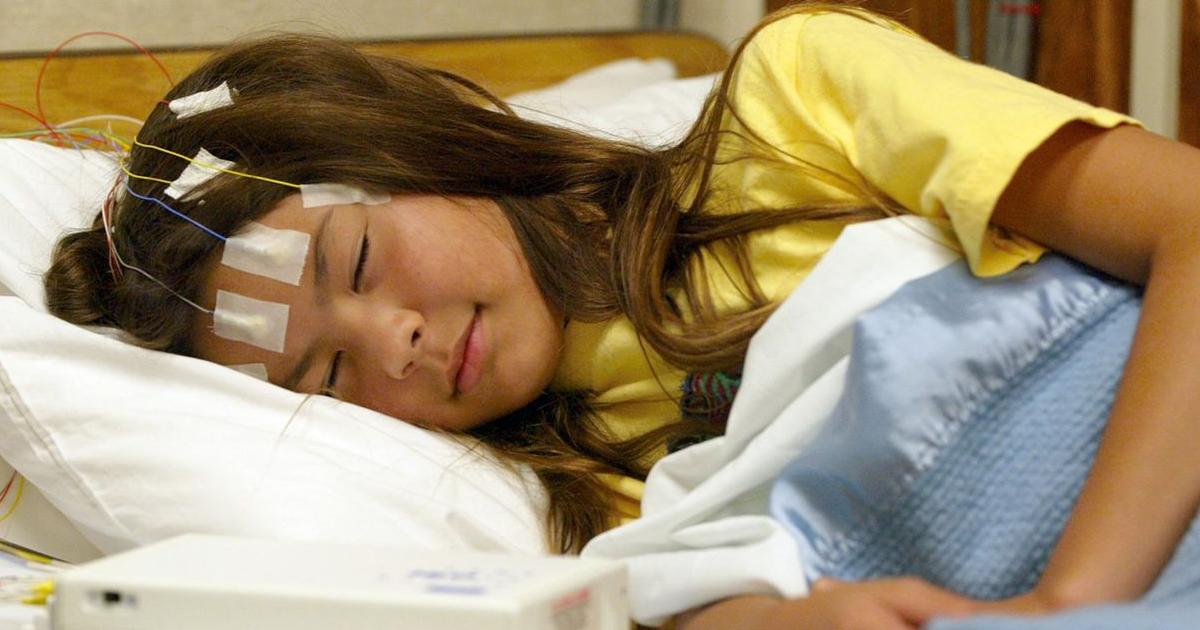What Are The Major Types Of Seizures?
Epilepsy, the most common seizure condition, occurs when there's abnormal electrical activity in an individual's central nervous system. The misfiring nerves cause seizure activity, which can affect the muscles, senses, or behavior on a short-term basis. Different people tend to have different seizures and symptom presentations, but most have fairly consistent symptoms from seizure to seizure. The two main types of seizures are focal and general seizures. Some seizures are more common in children, while others are more common in adults. Because seizures due to epilepsy can often be mistaken for other psychiatric, neurological, or muscle disorders, or vice versa, it's important for individuals to undergo thorough testing before receiving a diagnosis.
Get the details on the major types of seizures now.
Focal Seizures

A focal seizure starts in one part of the brain and tends to be localized. The names of different focal seizures are centered around the area of the brain where they happen. Focal seizures can cause emotional and physical effects, such as sensory hallucinations and unexplained emotions. Around sixty percent of those with epilepsy have focal seizures. Depending on the symptoms, focal seizures can sometimes be mistaken for psychiatric disorders like schizophrenia, other neurological disorders, or sleep disorders like narcolepsy. Some focal seizures don't cause a loss of consciousness, and these tend to alter the affected individual's perception or emotions. Patients might hear, smell, feel, see, or taste things differently. Some experience involuntary muscle jerking of a body part. It's also common to see flashing lights or feel tingling and dizziness. A focal seizure with impaired awareness causes a brief loss of consciousness. Someone having an impaired awareness focal seizure might stare into space and fail to respond to normal stimuli, or they may perform repetitive motions like swallowing, chewing, and rubbing their hands.
Uncover information on more types of seizures now.
Tonic-Clonic Seizures

A tonic-clonic seizure is a type of generalized seizure, meaning the electrical activity occurs throughout the whole brain. In the past, they were known as grand mal seizures. During this seizure, electricity instantly involves the whole brain and causes a loss of consciousness. Tonic-clonic seizures typically last anywhere from one to three minutes, though they have been known to last up to five minutes. Any seizure lasting more than five minutes is a medical emergency, and individuals should call an ambulance even if they (or the other person) experienced seizures before. A tonic-clonic seizure usually starts with an involuntary cry as the chest muscles contract and air moves through the vocal cords. The affected individual's muscles stiffen, and they fall to the floor. Some patients may soil themselves or wet themselves because of the increased pressure against the bowel and bladder. It's also possible for the patient to bite their tongue. One incorrect assumption is something should be put in the patient's mouth to keep them from biting their tongue. This is extremely dangerous and should not be done.
Learn more about the various types of seizures now.
Atonic Seizures

An atonic seizure is also known as a drop seizure and occurs when an individual experiences a sudden loss of muscle tone, which causes their body or head to become limp. Some patients may fall forward or collapse if they're standing. Some children with atonic seizures only experience dropping of the head, rather than the rest of the body. With a focal onset atonic seizure, the electrical activity begins in just one portion or side of the brain. When both sides of the brain are involved, it's called a general onset atonic seizure. In some individuals, just part of the body becomes limp, but others experience full limpness in their muscles. Patients might drop what they're holding, nod their heads, fall to the floor, or have drooping eyelids. An atonic seizure is very quick and usually over within fifteen seconds. It's possible that individuals might injure their heads when they fall, and some may benefit from wearing head protection to avoid injury. Patients who have generalized atonic seizures usually aren't fully aware of their surroundings during the event, though some do remain entirely conscious and aware.
Uncover more information regarding the major types of seizures individuals can experience now.
Absence Seizures

Absence seizures last only a few seconds and they cause patients to stare into space or lose awareness of their surroundings. Due to how fast these seizures end, they may not be noticed or may be mislabeled as normal zoning out. Another name for absence seizures is petit mal seizures. They most commonly occur in children, and the majority of cases don't involve long-term problems. Some children may have an absence seizure after they've hyperventilated for some time. Children from four to fourteen years old are most susceptible to absence seizures. Some children can have ten to one hundred seizures per day without anyone noticing. Absence seizures can impair learning and adversely affect a child's concentration, so it's important to diagnose and treat the issue. Some children have just one absence seizure, while others have multiple. The diagnosis of epilepsy typically comes after the child has experienced two or more seizures. An absence seizure might occur alongside other types of seizures. Children often grow out of this type of seizure, and it's unusual for adults to experience these symptoms. With that said, it is possible to have an absence seizure regardless of age.
Get more information on types of seizures now.
Myoclonic Seizures

Myoclonic seizures cause brief jerking or twitching of one or more muscles, a movement potentially similar to that of an electric shock. Multiple epilepsy syndromes involve myoclonic seizures, but different subtypes have different characteristics. Most individuals who experience a myoclonic seizure are awake and cognizant of their surroundings. The majority of myoclonic seizures don't last more than one or two seconds. Some individuals have just one seizure, but it's also possible for many of these seizures to occur rapidly in a short period. Myoclonic jerks can occur in individuals without epilepsy, typically when they're falling asleep or have the hiccups. These sensations are normal. When myoclonic seizures are part of epilepsy, they tend to cause abnormal movement on both sides of the patient's body simultaneously.
Reveal information on another type of seizure now.
Clonic Seizures

A clonic seizure is a type of seizure where an individual has an involuntary jerking in parts of their body. These types of seizures can be focal, where only one part of the brain is affected, or they may affect the entire brain. The jerky movements seen in an individual affected by a clonic seizure are the result of repeated stiffening and relaxing of the affected muscles. Clonic seizures tend to last for a duration of between a few seconds and two minutes. Clonic seizures produce movements that are more sustained and regular than those in a myoclonic seizure. Clonic seizures are rare but can occur in individuals of all ages, from infancy to old age. A clonic seizure in a young infant can easily be mistaken or dismissed as the child being jittery. The movements that occur in a clonic seizure cannot be stopped through restraint of the affected limbs or part of the body the way jitteriness can. A clonic seizure is diagnosed through the use of observation, standard EEG, and video EEG.
Continue reading to reveal additional types of seizures now.
Tonic Seizures

A tonic seizure is a type of seizure that is brief and includes sudden, unexpected commencement of increased tone in the affected individual's extensor muscles. The extensor muscles in the body increase the angle between the two parts of an individual's limb, like straightening the knee or elbow. Axial tonic seizures mainly affect the neck, respiratory, and abdominal muscles. A tonic axorhizomelic seizure affects an individual's upper limbs, such as the shoulders and arms. This type of seizure is known to affect the full extent of the upper and lower limbs. Asymmetric tonic seizures are known to produce tonic musculature contractions on a single side of the body. Tonic seizures are diagnosed with the use of EEG, as they include characteristics of medium and high voltage bilateral synchronous spikes between ten and twenty-five hertz. Tonic seizures are often accompanied by tiredness, confusion, headache, and postictal impairment.
Get more details on more types of seizures now.
Febrile Seizures

A febrile seizure is a type of seizure that occurs due to a sudden spike in total body temperature. Most febrile seizures do not indicate the patient has a serious health problem. An individual may experience a spike in body temperature when they contract and develop an infection. The body has a mechanism in place to help eliminate the causative pathogen by increasing the total body temperature to a point where the environment becomes inhospitable for bacteria, viruses, fungi, or parasites. This mechanism helps stop the pathogen causing the infection from growing further. The most common infections known to cause febrile seizures are roseola and influenza. Febrile seizures are provoked by a known cause and do not indicate the patient has any form of epilepsy. Most febrile seizures do not produce any form of brain damage, learning disability, or intellectual disability.
Discover additional types of seizures now.
Psychogenic Non-Epileptic Seizures
Psychogenic non-epileptic seizures are abnormal episodes of sensation, behaviors, and movement that appear similar to epileptic seizures. Psychogenic non-epileptic seizures do not originate neurologically but are a phenomenon that occurs with psychologic distress. These seizures can occur in individuals of any age but are more prevalent among those younger than fifty-five years old. These types of seizures are known to occur three times more in women than in men. Multiple psychological factors can trigger psychogenic non-epileptic seizures, such as stress, trauma, and other mental illness. It is easy to mistake psychogenic non-epileptic seizures for epileptic seizures because they present externally with similar features. However, psychogenic non-epileptic seizures do not have the characteristic of abnormal electrical discharges in the brain. Therefore, the diagnosis of psychogenic non-epileptic seizures is made through admission and observation in an epilepsy monitoring unit. In this setting, a neurologist can study EEG recordings and videos to make an accurate diagnosis.
Read more about the various types of seizures now.
Infantile Spasms

Infantile spasms are actually a disorder that occurs in infants involving multiple brief seizures. Infantile spasms look similar to when an infant becomes startled where the legs and arms become stiffened, and the head bends forward. Infantile spasms have a sudden onset and only last for several seconds. Some infants may experience these spasms in clusters with a duration of several minutes. Abnormal blood vessels in the infant's brain, infections, malformations in the infant's brain, and brain injuries can all produce infantile spasms. Vitamin B6 deficiency, genetic disorders, and certain metabolic disorders can also cause an individual to experience infantile spasms. Infantile spasms are known to be accompanied by slowed development or skill loss, such as crawling, babbling, and sitting. Most infants affected by infantile spasms will grow out of them by the time they reach four years old. Infantile spasms are diagnosed with the use of blood tests, urine tests, electroencephalography, video EEG, CAT scans, MRIs, and PET scans.